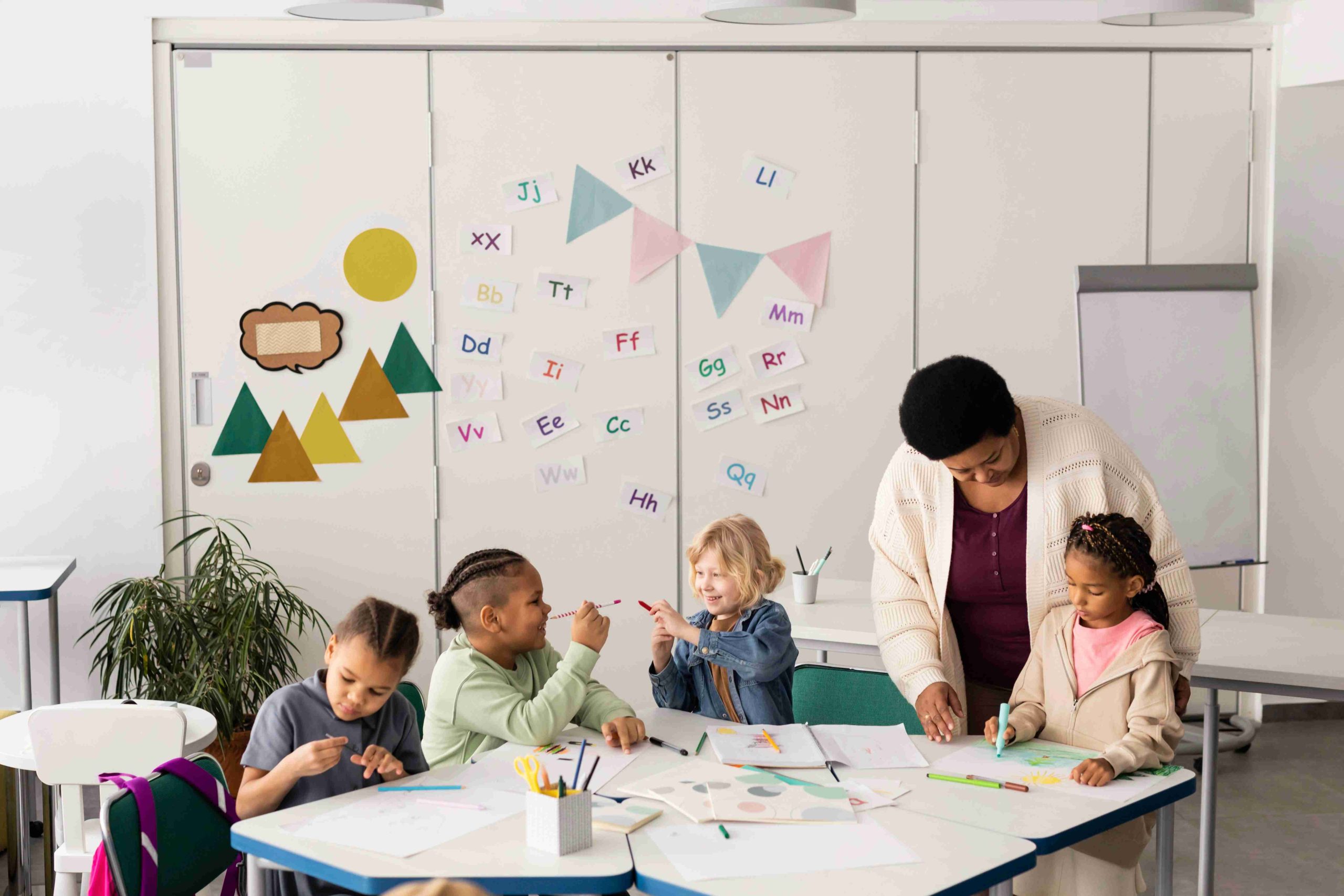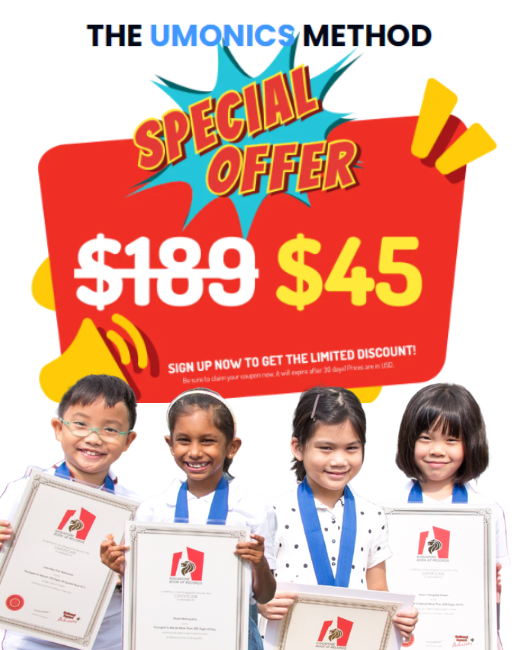
Nurturing Preschoolers: Facilitating a Lifelong Love for Learning
As educators and caregivers, our role in facilitating the learning journey of preschoolers is vital. By creating a supportive and engaging environment, we can spark their curiosity, foster their development, and lay the foundation for a lifelong love of learning. In this article, we will explore various strategies and approaches to effectively facilitate preschoolers’ learning experiences.
Building Meaningful Connections:
One of the key elements in facilitating preschoolers’ learning is building meaningful connections between their experiences and the knowledge they acquire. By helping them make connections, we can deepen their understanding and make learning more meaningful. Here are some strategies to achieve this:
Take the time to get to know each preschooler individually, discovering their interests and passions. Incorporate their interests into the learning environment and curriculum, creating a sense of relevance and personal investment in their education.
Connect new information to what preschoolers already know. Encourage them to recall and share their prior knowledge before introducing new concepts. This process not only activates their existing schema but also enhances their engagement and understanding.
Creating a Supportive Learning Environment:
A supportive learning environment is crucial for preschoolers to thrive and explore. It should be a safe, inclusive, and nurturing space that encourages active participation and fosters their natural curiosity. Consider the following aspects when creating such an environment:
Design the learning environment with attention to organization and accessibility. Provide various learning areas that cater to different interests and activities, such as a reading corner, art station, and hands-on exploration area. This allows preschoolers to engage in a range of activities that stimulate their learning.
Nurture a positive emotional climate where preschoolers feel valued, respected, and supported. Celebrate their achievements, provide constructive feedback, and encourage peer collaboration. This helps them develop self-confidence, resilience, and a sense of belonging, which are essential for optimal learning.
Engaging Learning Experiences:
Engaging preschoolers in learning experiences that are interactive, hands-on, and meaningful fosters their active participation and motivation. Here are some strategies to create engaging learning experiences:
Embrace play as a powerful tool for learning. Provide opportunities for imaginative play, role-playing, and constructive play. These activities allow preschoolers to explore, experiment, and develop essential cognitive and social skills while having fun.
Incorporate sensory-rich activities into the curriculum to engage preschoolers’ senses and enhance their learning. Activities involving touch, smell, taste, sight, and sound stimulate their cognitive and sensory-motor development. Examples include sensory bins, textured materials, and music and movement activities.
Individualized Instruction:
Recognizing that each preschooler is unique and has different learning styles and abilities, individualized instruction is crucial for facilitating their learning effectively. Consider the following approaches:
Adapt your teaching strategies to meet the diverse needs of preschoolers. Provide a variety of learning materials, offer alternative pathways to demonstrate understanding, and tailor instruction to accommodate different learning styles, strengths, and challenges.
Offer opportunities for preschoolers to have a voice and choice in their learning. Provide options for them to pursue topics of interest, set goals, and engage in self-directed projects. This promotes autonomy, ownership, and a sense of responsibility for their own learning.
Facilitating preschoolers’ learning is a rewarding and impactful responsibility. By building meaningful connections, creating a supportive learning environment, designing engaging experiences, and individualizing instruction, we can inspire their love for learning and set them on a path of lifelong curiosity and growth. Let us embrace this role with passion, empathy, and dedication, empowering preschoolers to become enthusiastic learners who are eager to explore the world around them.
Encouraging Collaboration and Communication
Collaboration and communication skills are essential for preschoolers to navigate social interactions and work effectively in group settings. Here are some strategies to encourage collaboration and communication:
Organize group projects or activities where preschoolers can work together towards a common goal. This could involve building structures with blocks, creating a mural, or organizing a mini-performance. Encourage them to share ideas, listen to each other, and collaborate to accomplish the task.
Introduce cooperative games that require preschoolers to work together as a team. These games promote communication, problem-solving, and teamwork. Examples include relay races, puzzles, and group challenges. Emphasize the importance of supporting and encouraging each other during these activities.
Use circle time as an opportunity for preschoolers to share their thoughts, experiences, and ideas with the group. Encourage active participation, listening, and respectful communication during these sessions. Provide prompts or discussion topics to stimulate conversation and promote turn-taking.
Encouraging Curiosity and Exploration
Preschoolers have a natural curiosity about the world around them. Nurturing this curiosity and providing opportunities for exploration can greatly enhance their learning experiences. Consider the following strategies:
Embrace an inquiry-based approach where preschoolers can explore topics of interest through questioning, investigating, and problem-solving. Encourage them to ask questions, make predictions, and seek answers through hands-on activities and experiments. Provide resources and materials to support their inquiries.
Organize field trips to places of interest such as museums, parks, or local businesses. These outings offer unique learning opportunities and expose preschoolers to new environments and experiences. Additionally, invite guest speakers, such as scientists, artists, or community workers, to share their expertise and inspire curiosity.
Encourage preschoolers to engage with the natural world through outdoor exploration. Take nature walks, visit gardens, or set up a nature table where they can observe and document their findings. Provide magnifying glasses, binoculars, or simple tools to facilitate their exploration and investigation of the natural environment.
Assessing Progress and Providing Feedback
Assessing preschoolers’ progress and providing constructive feedback is crucial for their growth and development. Consider the following approaches:
Regularly observe and document preschoolers’ learning experiences, interactions, and progress. Use checklists, anecdotal records, or digital platforms to record observations. This helps identify strengths, areas for improvement, and individual learning styles, which inform future instructional decisions.
Create developmental portfolios for each preschooler, which include samples of their work, photos, and observations. These portfolios serve as a comprehensive record of their progress over time. Share these portfolios with parents or guardians during conferences or meetings to foster collaboration and communication about the child’s development.
Provide specific and constructive feedback that focuses on effort, progress, and areas for growth. Acknowledge preschoolers’ achievements and encourage their continued efforts. Use descriptive language to highlight their strengths and provide guidance for improvement. Ensure feedback is age-appropriate, encouraging, and delivered in a supportive manner.
Integrating Technology
Integrating technology can enhance preschoolers’ learning experiences and provide new avenues for exploration and discovery. Consider the following ways to incorporate technology:
Introduce age-appropriate educational apps and websites that offer interactive activities and games aligned with learning objectives. These digital resources can reinforce concepts, promote problem-solving skills, and engage preschoolers in a fun and interactive manner.
Encourage preschoolers to use digital tools for creative expression, such as drawing programs, storytelling apps, or simple coding platforms. These tools allow them to showcase their ideas, develop digital literacy skills, and explore different modes of communication.
Take advantage of virtual field trips and guest speakers through video conferencing or online platforms. This enables preschoolers to connect with experts, explore distant locations, or observe live events from the comfort of their learning environment.
Facilitating preschoolers’ learning journey requires a holistic approach that encompasses their social, emotional, cognitive, and physical development. By fostering collaboration and communication, encouraging curiosity and exploration, assessing progress, and integrating technology, we can create an enriching and stimulating learning environment for preschoolers. Let us embrace our role as facilitators with passion and dedication, nurturing their love for learning and empowering them to reach their full potential.
Encouraging Collaboration and Communication
Collaboration and communication skills are crucial for preschoolers’ development and future success. Here are some additional strategies to promote collaboration and communication in the learning environment:
Engage preschoolers in role-playing activities that require them to take on different roles and interact with one another. This could involve setting up a pretend restaurant, a doctor’s office, or a grocery store. Encourage them to communicate, negotiate, and problem-solve together to carry out their roles effectively.
Introduce opportunities for preschoolers to provide feedback to their peers. For example, after a group activity or project, encourage them to share what they liked about their classmates’ contributions or offer suggestions for improvement. This promotes active listening, empathy, and constructive communication.
Engage preschoolers in collaborative storytelling sessions where they take turns adding to a story. This activity encourages them to listen to each other, build on ideas, and co-create a narrative together. It enhances their communication skills, imagination, and creativity.
Fostering Independence and Self-Direction
Developing independence and self-direction in preschoolers empowers them to take ownership of their learning and become active participants in the educational process. Consider the following strategies:
Offer a variety of activities and materials that allow preschoolers to make choices based on their interests and preferences. This promotes independence, decision-making, and self-directed learning. Provide activity centers with different options, such as art, building blocks, sensory play, and puzzles, and allow preschoolers to choose their preferred activities.
Create learning stations or centers in the classroom where preschoolers can engage in independent exploration. Each station can focus on a specific skill or concept, such as literacy, numeracy, science, or art. Provide clear instructions, materials, and resources for preschoolers to interact with independently.
Introduce the concept of goal setting to preschoolers by encouraging them to identify and set achievable learning goals. This can be done through simple activities such as creating a personal learning chart, where they can track their progress and celebrate their achievements. Guide them in setting realistic goals and provide support as they work towards accomplishing them.
Differentiated Instruction
Preschoolers have diverse learning styles, abilities, and interests. Differentiated instruction ensures that each preschooler’s individual needs are met. Consider the following approaches:
Implement flexible grouping strategies to cater to preschoolers’ varying learning needs. Create small groups based on their abilities, interests, or learning preferences. This allows for targeted instruction and the opportunity for peer collaboration. Rotate groupings periodically to provide a variety of learning experiences.
Provide a range of instructional materials that cater to different learning styles and preferences. Offer hands-on manipulatives, visual aids, audio recordings, and digital resources to engage preschoolers in various ways. By presenting information through multiple modalities, you can accommodate diverse learning preferences.
Offer individualized support to preschoolers who require additional assistance or enrichment. Observe their progress closely, identify areas of strength and areas that need improvement, and provide targeted interventions or extensions. This personalized approach ensures that each preschooler receives the support necessary to succeed.
Building a Positive Learning Environment
Creating a positive and supportive learning environment is essential for preschoolers’ well-being and optimal learning outcomes. Consider the following strategies:
Set clear and age-appropriate rules that promote respect, kindness, and inclusivity. Establish predictable routines that provide a sense of structure and security. Preschoolers thrive in environments where expectations are consistent and well-defined.
Recognize and celebrate preschoolers’ achievements, both big and small. Display their artwork, showcase their projects, and acknowledge their efforts and progress. Celebrations can be through verbal praise, certificates, stickers, or a designated “wall of fame.” This fosters a sense of accomplishment, self-esteem, and motivation.
Instill a growth mindset in preschoolers by promoting the belief that their abilities can be developed through effort, practice, and resilience. Encourage them to embrace challenges, persist in the face of difficulties, and view mistakes as opportunities for learning and growth. This mindset cultivates a positive attitude towards learning and fosters a love for exploration and discovery.
In conclusion, preschoolers’ learning can be effectively facilitated by implementing strategies that promote collaboration and communication, foster independence and self-direction, differentiate instruction, and create a positive learning environment. By adopting these approaches, educators can create a nurturing and engaging learning environment that supports preschoolers’ holistic development and sets them on a path of lifelong learning. Let us embrace the privilege of facilitating preschoolers’ learning journeys and empower them to become enthusiastic, confident, and self-motivated learners.


